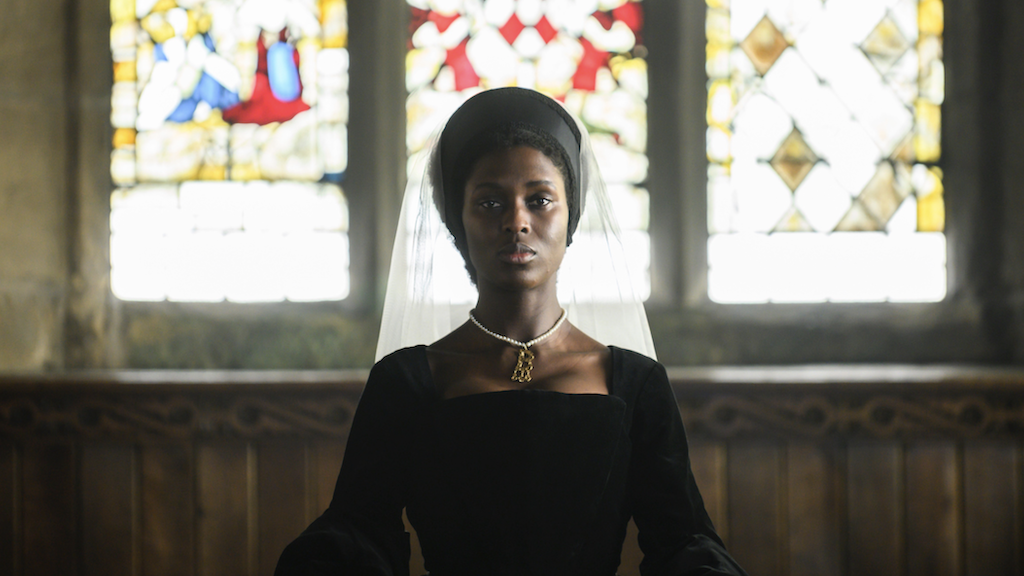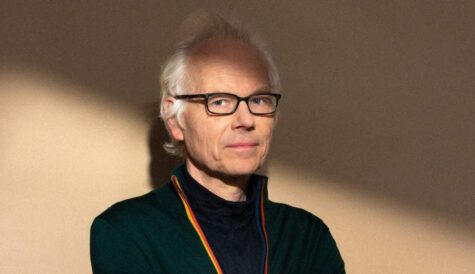WGGB calls for “complete reset” as Diamond report records “significant drop” in UK women writers & directors

Anne Boleyn (Source: Parisa Taghizadeh/Fable/Sony/AMC)
The number of women writers and directors contributing to British TV has declined over the past six years, despite industry initiatives to address the gender gap, according to the latest Diamond report from the Creative Diversity Network (CDN).
The UK organisation dedicated to improving DE&I has published a new overview of its broadcaster-backed Diamond initiative, covering six years of diversity data. It found that women writers have seen their contributions to UK TV shows decline from 42.8% in 2016/17 to 32.4% in 2021/22, while female director contributions also fell from 26.9% to 25.3% in the same period.
The CDN also found a “significant drop” in the proportion of female writers working in the industry from 39.6% in 2019/20 to 36.6% in 2020/21, which it suggested may have been a consequence of the pandemic and subsequent lockdowns, which had “disproportionately impacted women.”
The data also found that female writers, directors and producer-directors are also much less likely than their male counterparts to be employed on peak-time programmes (35.8% female writers, 32.1% female directors) than on non-peak time programmes (43.6% writers, 35.8% directors).
Female writers are particularly under-represented in comedy programmes at just 30.2%, while female directors are also lacking in children’s (26.2%) and entertainment (21.2%) shows..
The CDN said that despite these figures “women are well represented in the TV industry overall,” but highlighted that the number of female writers employed by each broadcaster doesn’t always reflect the actual number of contributions they make to content for that broadcaster, suggesting that they are under-used even when employed.
For example, Paramount UK had the largest percentage of female writers in 2020/21 at 47.5% – airing titles such as the Eve Hedderwick Turner-penned Anne Boleyn on broadcaster Channel 5 during the period – but were actually responsible for the smallest proportion of contributions (22.4%). By contrast, 39.5% of writers on Channel 4 programmes were female, but they were responsible for the highest percentage of writing contributions across any broadcaster at 58.6%.
Responding to the report, Ellie Peers, general secretary at UK writers union the WGGB (Writer’s Guild of Great Britain), commented: “This report has made clear what we have long suspected, that multiple schemes and initiatives are failing to create real systemic change in the industry. It has been over five years since we release Equality Writes, showing that women writers faced a glass ceiling with no progress being made to increase their representation. This report now shows that for women writers the situation is getting worse, not better and for other underrepresented groups progress is far too slow. This is unacceptable and cannot be allowed to continue.”
Directors UK, meanwhile, described the CDN data as “dire”, with CEO Andy Harrower suggesting that if broadcasters must have “clearer commissioning targets, a willingness to hire under-represented talent and commit to a structure that supports career progression” if they “genuinely want to address this systemic issue.”
Disability, race, age and sexuality
The CDN also revealed that while there has been a steady increase in the proportion of disabled writers and directors employed in recent years – to 9.9% and 7.3% respectively in 2021/22 – disabled people made only 7.6% of writers’ contributions in 2021/22 and 4.6% of directors’ contributions. The CDN said that these rates are “very low considering that disabled people make up 17% of the UK workforce.”
Disabled people are the least well represented in the role of producer-director, where in contrast to writers and directors, there is no sign of any increase in representation. In 2021/22 disabled people made just 4.1% of all producer-director contributions.
There have also been increases in the number of Black, Asian and Minority Ethnic (BAME) directors over the past six years – up to 13.4% in 2021/22 from 10.8% in 2016/16 – but the CDN described their programme contributions as “stubbornly low” at just 9.5% in 2021/22 and below 10% in each of the last six years.
“So while the rate of employment has increased, these directors are contributing to relatively few programmes compared to their white counterparts, whose number of contributions (90.5%) is higher than their employment numbers (86.6%),” highlighted the CDN.
The proportion of BAME writers increased to a high of 15.6% in 2020/21, which the CDN suggested could be due to broadcasters’ efforts to respond to the Black Lives Matter movement. However, the proportion has since fallen to 14% in 2021/22.
Despite these increases in employment rates – and as with directors – contributions by BAME writers have remained considerably lower (8.7%), which again contrasts with white counterparts, whose contributions are higher than their employment figures.
The Diamond data found strong representation for lesbian, gay and bisexual writers (23.9%) and directors (24.4%) in the UK compared to the UK population estimates of 6.4%.
However, contributions by gay men dominate, with many times that of lesbians (0.9% writers, 3.4% directors) and bisexuals (6.2% writers, 2.2% directors).
Meanwhile, contributions made by directors and writers aged over 50 have dropped over the last six years. Although nearly one in three (31%) of the UK workforce is aged 50 or over, just 25.3% of director contributions were from older people, down from 26.9% in 2016/17. 21.4% of writing contributions were made by people over 50 in 2021/22, down from 42.8% in 2016/17.
Peers said that the UK industry needs “a complete reset” and the WGGB is calling for an independent inquiry “to investigate systemic issues of racism, sexism, ableism and all forms of discrimination that exist within the industry.”
Deborah Williams, CEO of the Creative Diversity Network, meanwhile commented: “Over the years we have seen broadcasters, streamers, production companies and industry bodies launching a series of initiatives aimed at diversifying writers and directors. But our analysis of six years of Diamond data makes it clear that these efforts are yet to be operating at the necessary scale, or they have simply failed to achieve the intended impact. It is very disheartening to see the number of women in these roles actually decrease over this period, and other groups are not being given opportunities to actually make shows, at the bigger-budget, peak time end of the scale.”



